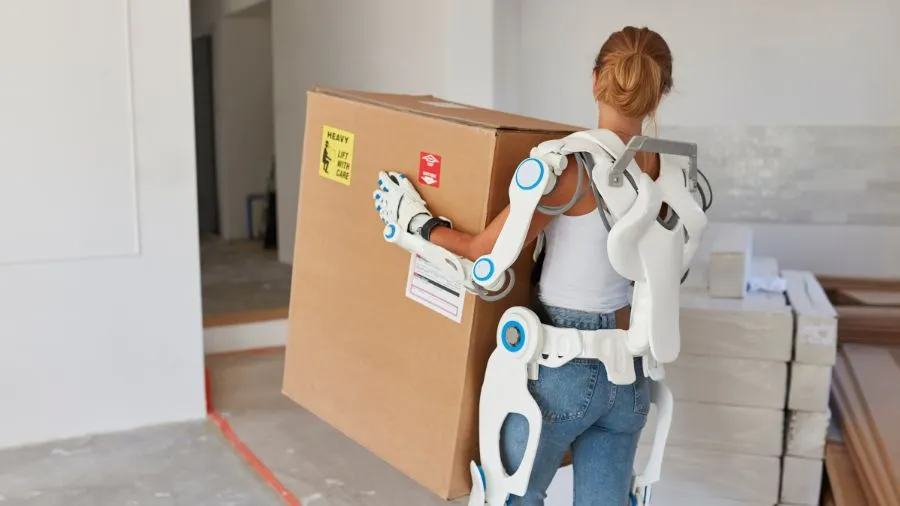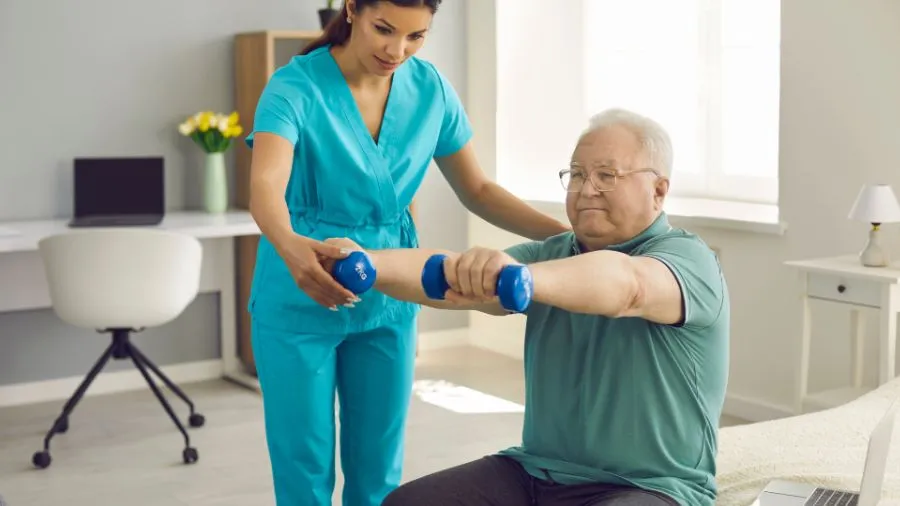The world of physical therapy is undergoing a revolution with the emergence of bionic suits, also known as exoskeletons. These remarkable devices are transforming rehabilitation by providing innovative support and assistance to patients with mobility impairments.
Exoskeletons: Redefining Rehabilitation
Exoskeletons are wearable robotic structures designed to augment, enhance, or replace human physical capabilities.expand_more In physical therapy, they act as a supportive framework, assisting patients in regaining lost mobility and improving their functional abilities.
These technologically advanced suits are equipped with motors, sensors, and computer systems that work in tandem to provide targeted support to specific muscle groups.expand_more Bionic suits can be programmed to mimic natural human movement patterns, allowing patients to relearn walking, improve balance, and strengthen weakened muscles.
Benefits of Bionic Suits in Physical Therapy
The integration of bionic suits into physical therapy offers a multitude of benefits for patients:
- Improved Gait Training: Exoskeletons provide a safe and controlled environment for patients to practice walking again. By offering variable levels of assistance, therapists can gradually decrease support as the patient regains strength and coordination.exclamation
- Enhanced Balance and Stability: Bionic suits can be programmed to provide balance and stability assistance, promoting confidence and reducing the risk of falls during gait training.
- Increased Strength and Endurance: Exoskeletons can be used to provide targeted resistance training, helping patients rebuild muscle strength and improve their overall endurance.
- Faster Recovery Times: Studies have shown that bionic suit therapy can lead to faster recovery times compared to traditional physical therapy methods.
- Psychological Benefits: Regaining mobility can be a significant confidence booster. The ability to walk or move independently with the assistance of a bionic suit can have a profound psychological impact on patients.
Applications of Bionic Suits in Physical Therapy
Bionic suits are finding application in a variety of physical therapy settings, including:
- Neurological conditions: Stroke, spinal cord injury, and multiple sclerosis are some neurological conditions that can benefit from exoskeleton therapy. These suits can help patients relearn lost motor skills and improve their functional abilities.
- Musculoskeletal disorders: Bionic suits can be used to assist patients with musculoskeletal disorders such as muscular dystrophy and arthritis. They can provide support and improve mobility, allowing patients to maintain their independence.
- Orthopedic injuries: Following orthopedic surgeries such as knee or hip replacements, exoskeletons can be used to facilitate faster recovery and improve rehabilitation outcomes.
The Future of Bionic Suits in Physical Therapy
The field of bionic suit technology is rapidly evolving.expand_more As research continues and advancements are made, we can expect to see even more sophisticated and versatile exoskeletons emerge in the future.exclamation Here are some potential areas of development:
- Increased Affordability: Currently, the cost of bionic suits can be a barrier for some patients. Making these devices more affordable will allow for wider accessibility in physical therapy clinics.
- Improved Integration with AI: Artificial intelligence (AI) has the potential to further enhance exoskeleton therapy.expand_more AI algorithms can personalize treatment plans, adjust support levels based on individual patient needs, and provide real-time feedback during therapy sessions.
- Home-Based Rehabilitation: The development of lighter and more user-friendly exoskeletons could pave the way for home-based rehabilitation programs. This would allow patients to continue their therapy outside of the clinical setting, increasing convenience and potentially improving long-term outcomes.
Conclusion
The rise of bionic suits in physical therapy is a testament to the continuous advancements in medical technology. These innovative devices offer tremendous potential for improving patient outcomes, accelerating recovery times, and enhancing the quality of life for individuals with mobility impairments. As research and development continue, we can expect exoskeletons to play an increasingly important role in the future of physical therapy.
Sources:
- Ekso Bionics: How Effective Is Exoskeleton Rehabilitation?: https://eksobionics.com/how-effective-is-exoskeleton-rehabilitation/
- Avera Health: Bionic Physical Therapy with the Robotic Exoskeleton Suit:
- Ekso Bionics: How to Incorporate Exoskeletons into Physical Therapy Treatments




